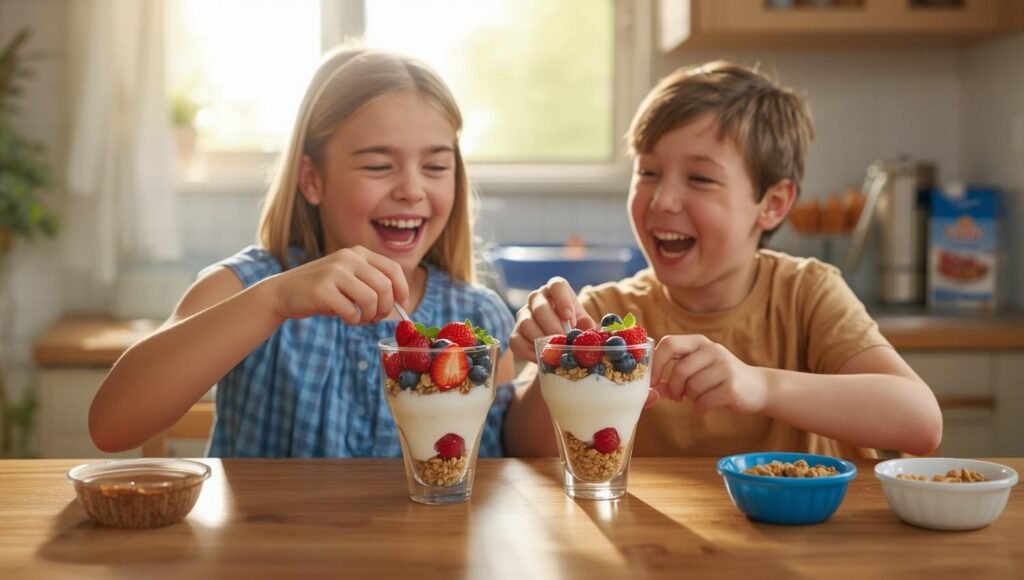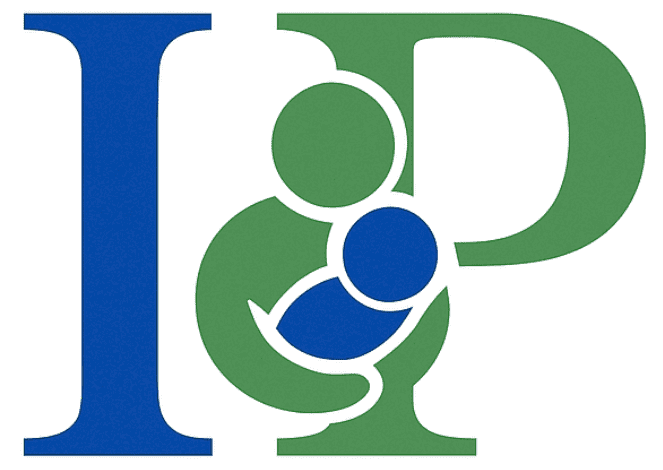Breakfast sets the tone for your child’s entire day. As parents, we know mornings can be chaotic—between getting dressed, packing lunches, and rushing to school, breakfast often becomes an afterthought. But the truth is, a high-protein breakfast can completely transform your child’s energy, focus, and mood throughout the day.
Research shows that protein helps children stay full longer, boosts focus, and balances blood sugar, preventing those mid-morning crashes that make learning difficult. Whether your child is a picky eater or a little athlete who needs extra fuel, this guide will help you build a breakfast routine that nourishes their body and mind.
Why a High-Protein Breakfast Matters for Kids
When we think of breakfast, many of us picture cereal or toast—but these are often packed with sugar and low in lasting nutrients. The secret to keeping kids energized is protein — the building block for muscles, hormones, and brain development.
The Science Behind Protein Power
A study published in Eating Behaviors found that children who ate a protein-rich breakfast (like eggs and milk) consumed 70 fewer calories at lunch compared to those who ate cereal or oatmeal. That’s a small but meaningful difference that helps maintain healthy weight and metabolism.
Protein also slows digestion, keeping energy levels steady and supporting concentration. That’s why many nutrition experts recommend starting the day with at least 10–15 grams of protein for school-aged children.

Benefits of a Protein-Packed Breakfast
- Keeps kids full longer – Reduces snacking before lunch.
- Stabilizes energy and mood – Prevents sugar highs and crashes.
- Boosts learning and memory – Provides amino acids that fuel brain function.
- Supports muscle growth and immune health – Especially important for active children.
“It’s not about giving kids more food—it’s about giving them the right food,” says pediatric dietitian Dr. Melissa Hart. “Protein helps children start their day balanced, focused, and ready to learn.”
Understanding What a Balanced, High-Protein Breakfast Looks Like
A well-balanced breakfast should include a combination of protein, healthy fats, fiber, and complex carbohydrates. Together, these nutrients create a steady source of energy that fuels learning, play, and growth.
The Magic Formula for a Smart Breakfast
Think of breakfast like a simple equation:
Protein + Whole Grains + Fruit + Healthy Fat = Morning Success
Here’s how that looks in real life:
- 🥚 Scrambled eggs + whole wheat toast + strawberries + avocado slices
- 🍓 Greek yogurt + granola + blueberries + honey drizzle
- 🥤 Peanut butter smoothie + banana + oats
Each component serves a purpose: protein provides fuel, grains add energy, fruit offers vitamins, and healthy fats keep your child full longer.
High-Protein Breakfast Ideas for Busy Parents
We all know mornings are hectic—so these recipes are quick, kid-friendly, and packed with nutrients. Each option contains at least 10 grams of protein, balances flavors kids love, and takes 10–15 minutes or less to prepare.
1. Scrambled Egg Power Bowl
Protein: ~14g per serving
Ingredients:
- 2 eggs
- 1 tbsp milk
- ¼ cup shredded cheese (cheddar or mozzarella)
- ¼ cup chopped spinach or bell peppers
- ½ slice whole grain toast, cut into cubes
Instructions:
- Whisk eggs and milk, season lightly with salt.
- Cook in a nonstick pan with spinach or peppers until fluffy.
- Sprinkle cheese on top and serve with toast cubes on the side.
Parent Tip: Prep chopped veggies the night before to save time. Add turkey or chicken sausage for extra protein!
2. Greek Yogurt Parfait Cups
Protein: ~15g per serving
Ingredients:
- ¾ cup plain Greek yogurt (unsweetened or lightly sweetened)
- ¼ cup granola
- ½ cup mixed berries (blueberries, raspberries, strawberries)
- 1 tsp honey or maple syrup (optional)
Instructions:
- Layer yogurt, granola, and fruit in a glass or mason jar.
- Drizzle honey or syrup on top.
- Serve chilled or make overnight for grab-and-go mornings.
Why It Works: Greek yogurt contains twice the protein of regular yogurt, plus probiotics for gut health.
3. Peanut Butter & Oat Smoothie
Protein: ~18g per serving
Ingredients:
- 1 banana
- 2 tbsp peanut butter
- ½ cup rolled oats
- 1 cup milk (or soy milk for extra protein)
- Ice cubes as needed
Instructions:
- Combine all ingredients in a blender.
- Blend until smooth and creamy.
- Pour into a reusable cup with a straw—perfect for the car ride to school!
Parent Tip: Swap peanut butter for almond butter or sunflower butter if your child has allergies.
4. Cottage Cheese & Fruit Waffle
Protein: ~16g per serving
Ingredients:
- 1 whole-grain waffle
- ½ cup cottage cheese
- ½ cup pineapple chunks or berries
- Cinnamon sprinkle (optional)
Instructions:
- Toast the waffle until golden.
- Top with cottage cheese and fruit.
- Sprinkle cinnamon for added flavor.
Why Kids Love It: It tastes like dessert but provides lasting energy and protein.
5. Breakfast Quesadilla
Protein: ~20g per serving
Ingredients:
- 1 whole wheat tortilla
- 2 scrambled eggs
- ¼ cup shredded cheese
- 2 tbsp black beans or diced chicken
Instructions:
- Place scrambled eggs and beans on one half of the tortilla.
- Sprinkle cheese, fold, and cook on a pan until crispy and golden.
- Cut into wedges and serve with salsa or avocado.
Parent Tip: Make extra and freeze for a quick microwave breakfast later in the week.
6. Protein Muffins (Make-Ahead Option)
Protein: ~12g per muffin
Ingredients:
- 2 ripe bananas
- 2 eggs
- 1 cup oat flour
- 1 scoop vanilla protein powder
- ¼ cup Greek yogurt
- 1 tsp baking powder
Instructions:
- Mix all ingredients until smooth.
- Pour into muffin tins and bake at 350°F for 20 minutes.
- Cool and store for up to 4 days.
Why It Works: These muffins pack protein, fiber, and flavor — perfect for rushed mornings or after-school snacks.

How Protein Impacts Learning and Mood
Beyond physical growth, breakfast protein influences your child’s brain chemistry. Amino acids from protein foods help produce neurotransmitters like dopamine and serotonin, which control mood and focus.
Brain Benefits of Protein for Kids
- Improved concentration: Protein fuels neurotransmitters for mental alertness.
- Better memory: Stabilized glucose levels improve retention and recall.
- Fewer meltdowns: Balanced energy prevents mood swings and irritability.
That’s why teachers often notice students who eat a balanced breakfast are more attentive and engaged. It’s not just food — it’s brain fuel.
Making Protein Breakfasts Work for Your Family
Even the healthiest breakfast won’t work if it’s too complicated. The key is consistency, convenience, and creativity.
💡 Plan Ahead
- Prep smoothie packs with frozen fruit and oats.
- Boil eggs on Sunday and store them for weekday snacks.
- Make a batch of protein muffins or overnight oats to grab quickly.
🧺 Get Kids Involved
Kids love helping when breakfast feels like an activity. Let them:
- Choose their favorite fruits or toppings.
- Stir ingredients for muffins or parfaits.
- Decorate their plates with fun shapes.
📱 Use Visual Cues
Print out a “Breakfast Menu Board” for the week and let kids pick what they want each day. This gives them ownership and reduces morning chaos.
Packing Protein into School Mornings
If your child eats breakfast at school, you can still make sure they’re getting protein by:
- Checking the school menu and adding a small protein snack (like a cheese stick or boiled egg).
- Asking teachers or cafeteria staff about high-protein options.
- Encouraging your child to choose milk or yogurt over juice.
A small adjustment can make a big difference in their daily nutrition.
How to Encourage Picky Eaters
Picky eaters often resist new foods — especially in the morning. But you can still get protein into their breakfast with these tricks:
🍓 Blend It In
Add Greek yogurt, milk, or protein powder to fruit smoothies.
🍞 Hide It in Favorites
Mix eggs into pancakes or use nut butter on toast for extra grams of protein.
🍫 Add a Fun Twist
Make “chocolate” protein pancakes using unsweetened cocoa powder and banana. Kids feel like they’re getting a treat while eating something healthy.

Top 10 High-Protein Foods for Kids’ Breakfasts
Here’s a quick list to guide your grocery shopping:
- Eggs – versatile, fast, and rich in choline for brain health.
- Greek yogurt – twice the protein of regular yogurt.
- Cottage cheese – soft and mild for young eaters.
- Nut butters – peanut, almond, or sunflower for allergy-safe options.
- Milk or soy milk – natural calcium and protein combo.
- Turkey or chicken sausage – lean and lower in fat.
- Oats and quinoa – plant-based proteins with fiber.
- Cheese – string cheese, shredded cheese, or cheese cubes.
- Tofu – great in smoothies or scrambles.
- Protein powder (optional) – add to muffins or pancakes for a boost.
Building a Sustainable Breakfast Routine
Consistency is everything. Children thrive on predictable routines — and when breakfast becomes part of their rhythm, healthy eating becomes a habit for life.
🕖 Step 1: Create a Morning Schedule
Wake up 15 minutes earlier to give everyone time to eat without stress.
🥣 Step 2: Keep Ingredients Accessible
Store healthy options where kids can see them — fruit bowls, yogurt cups, and prepped eggs in the fridge.
💬 Step 3: Lead by Example
When parents eat breakfast too, children are more likely to follow suit. Sit down together, even for five minutes.

Conclusion: Fuel Their Future, One Breakfast at a Time
Building a better breakfast doesn’t have to be complicated. It’s about making intentional choices that support your child’s growth, learning, and happiness.
A high-protein breakfast gives kids what they need to start strong — focus, energy, and emotional balance. Whether it’s scrambled eggs, yogurt parfaits, or smoothies on the go, these small steps create lifelong healthy habits.
Remember: the goal isn’t perfection — it’s consistency. Every balanced breakfast is an investment in your child’s future.
Frequently Asked Questions (FAQs)
1. How much protein do kids need in the morning?
Most school-aged children need around 10–15 grams of protein at breakfast, depending on their age, size, and activity level. Check with your pediatrician or a dietitian for personalized recommendations.
2. Are high-protein breakfasts safe for young children?
Yes, absolutely. Protein is essential for growth and development. The key is balance — combine it with fruits, whole grains, and dairy for a complete meal.
3. What are quick high-protein breakfasts for busy mornings?
Try Greek yogurt parfaits, smoothies with milk and nut butter, or boiled eggs with whole grain toast. These can be prepared in minutes and eaten on the go.
4. My child doesn’t like eggs. What are other protein options?
Try yogurt, cheese, nut butter, cottage cheese, or protein muffins. You can also add protein powder to pancakes or oatmeal for a subtle boost.
5. How do I get my picky eater to eat more protein?
Start small and make it fun! Add protein to foods they already enjoy — like topping pancakes with peanut butter or blending yogurt into smoothies. Letting them help in the kitchen also increases their interest in new foods.
6. Can high-protein breakfasts help with weight management?
Yes. Protein helps regulate appetite and prevent overeating later in the day. Studies show kids who eat protein-rich breakfasts consume fewer empty calories at lunch.
7. Should I use protein powder for my child?
Whole foods are always best, but protein powder can be helpful if your child struggles to meet protein needs. Choose high-quality, child-safe options with minimal additives and consult a pediatrician first.
8. What’s the best drink for a protein-packed breakfast?
Low-fat milk, soy milk, or smoothies made with yogurt are great options. Avoid sugary juices that spike blood sugar and cause crashes mid-morning.
9. How early should kids eat breakfast before school?
Ideally, 30–60 minutes before school. If your child isn’t hungry right away, pack a small protein snack they can eat on the way or before class starts.
10. What’s the biggest mistake parents make with breakfast?
Relying too much on sugary cereals or pastries. These cause quick spikes and drops in energy. Swapping even one of those mornings for a protein-rich meal makes a noticeable difference in behavior and focus.

